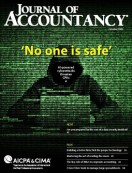The elimination of the effective date for FASB’s private company GAAP alternatives means it’s never too late to take advantage of these accounting simplifications. Each alternative may offer substantial relief and cost savings for private companies as they perform their accounting.
Accounting & reporting
GASB issues proposed lease accounting implementation guide
GASB issued a proposed implementation guide that is designed to help state and local governments understand the board’s new standard on lease accounting.
FASB addresses deferred revenue in business combinations
FASB took a step forward in resolving challenges in its rules for recognizing and measuring deferred revenue in business combinations.
Finding value in revenue recognition implementation
The challenges associated with FASB’s new revenue recognition standard have been substantial for many companies, but at least they’re gaining valuable data and process improvements as a result of the implementation.
FASB proposes transition relief for credit losses standard
FASB proposed providing an option to measure certain types of assets at fair value, a change aimed at making the transition to its new credit losses standard easier.
FASB alters transition requirements, scope of credit losses standard
FASB amended its standard on accounting for credit losses, changing the transition requirements and clarifying the scope of the standard.
Simplifying adoption of NFP financial reporting standard
Tax-exempt organizations are working through the biggest change to not-for-profit financial reporting in 25 years. Smaller organizations with limited resources can smoothly implement FASB’s new rules by following some best practices.
FinREC proposes guidance on inventory valuation
Comments are sought on nonauthoritative guidance.
FASB proposes narrow-scope financial instruments accounting changes
No significant effects on accounting practice are expected.
AICPA publishes broker-dealer working draft
The AICPA Financial Reporting Executive Committee has published a working draft of an illustrative note to financial statements of SEC-registered broker-dealers.
What CPAs need to know about 4 cryptoasset classes
This article breaks down cryptoassets into four categories.
Changes related to peer review proposed for UAA
The National Association of State Boards of Accountancy (NASBA) is proposing changes to the Uniform Accountancy Act (UAA) Model Rules related to peer review programs.
GASB proposes implementation guide for fiduciary activities standard
GASB published a proposed implementation guide that provides questions and answers about the board’s new standards for state and local government accounting and financial reporting for fiduciary activities.
IASB clarifies definition of ‘material’
The objective is to make it easier for companies to make judgments.
FASB proposal addresses accounting for TV series
Alignment with capitalization rules for films is sought.
SASB publishes industry-specific sustainability accounting standards
The standards cover financially material issues in 77 industries.
FASB permits new benchmark rate for hedge accounting
The change takes effect alongside an Accounting Standards Update.
FASB expands private company consolidation relief
The guidance supersedes the 2014 private company exception.
How audit committees can oversee FASB standard adoption
Audit committees have a lot to consider as 2018 concludes with adoption of game-changing accounting standards in full swing at many companies.
FASB proposes extending 2 GAAP alternatives to not-for-profits
Under a proposal issued by FASB, not-for-profits would be able to take advantage of the private company GAAP alternatives for accounting for goodwill and accounting for intangible assets in a business combination.
Features
SPONSORED REPORT
Preparing clients for new provisions next tax season
As the 2025 filing season approaches, H.R. 1 introduces significant tax reforms that CPAs must be prepared to navigate. These legislative changes represent some of the most comprehensive tax updates in recent years, affecting both individual and corporate taxpayers. This report provides in-depth analysis and guidance on H.R. 1.


















